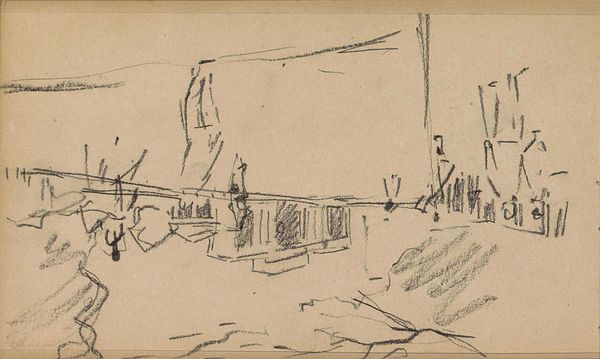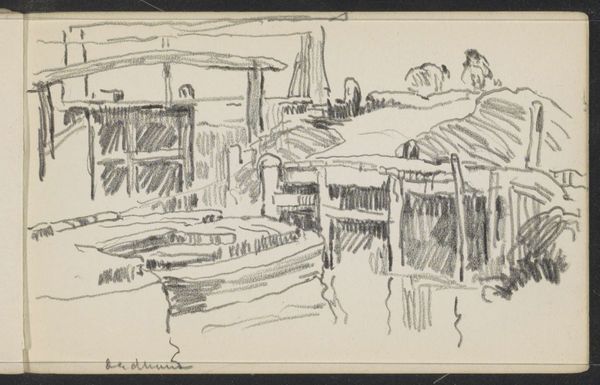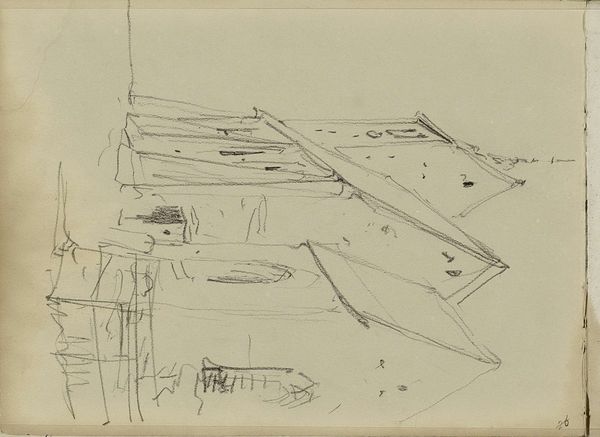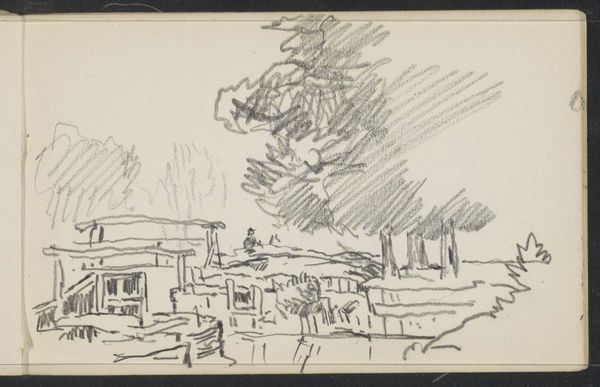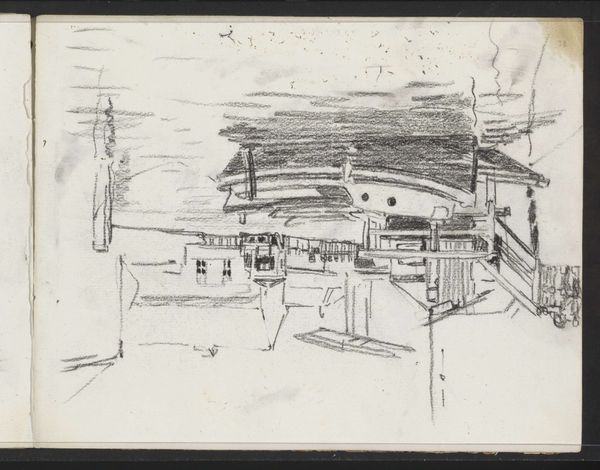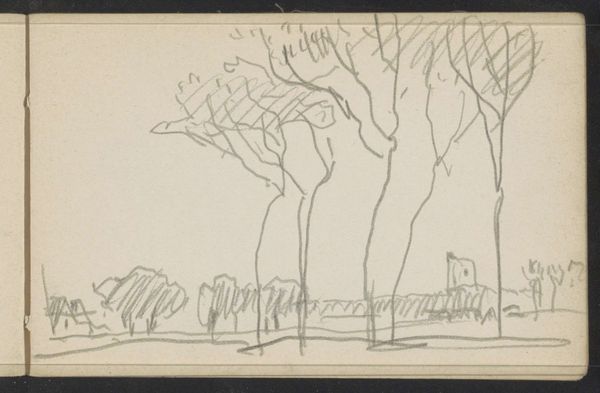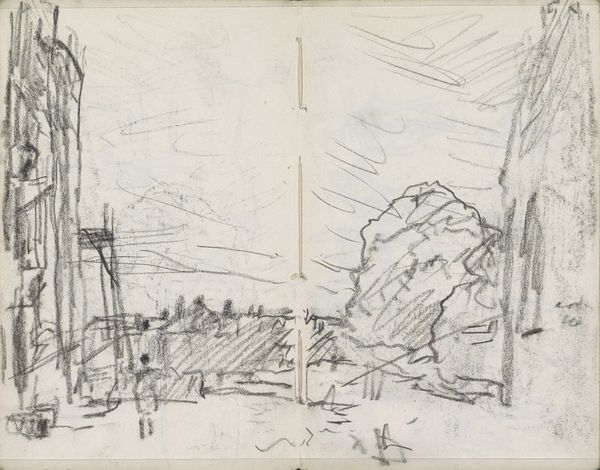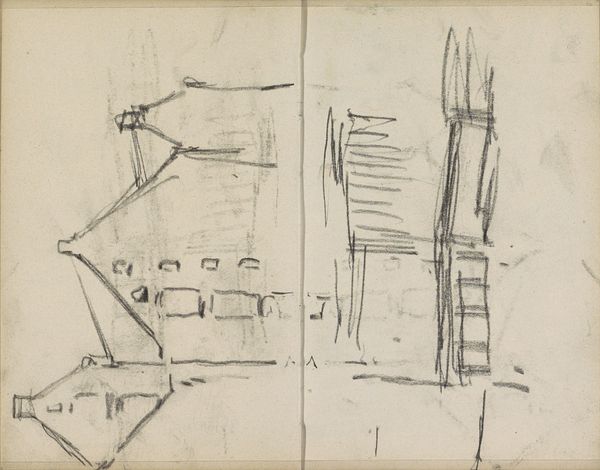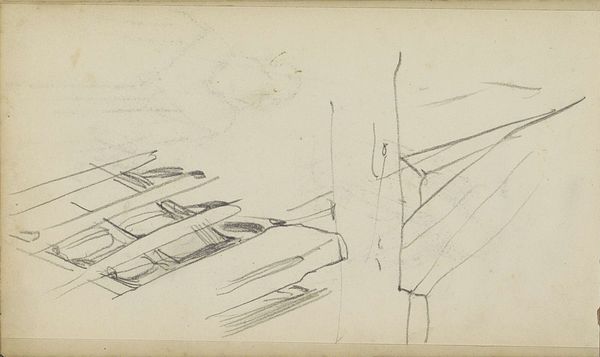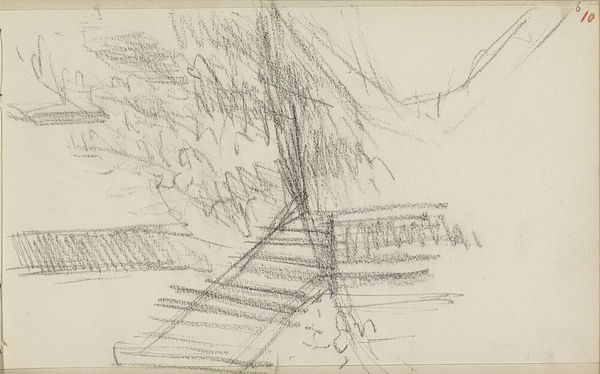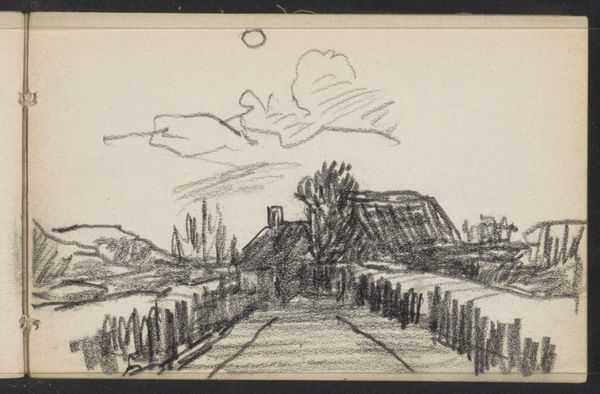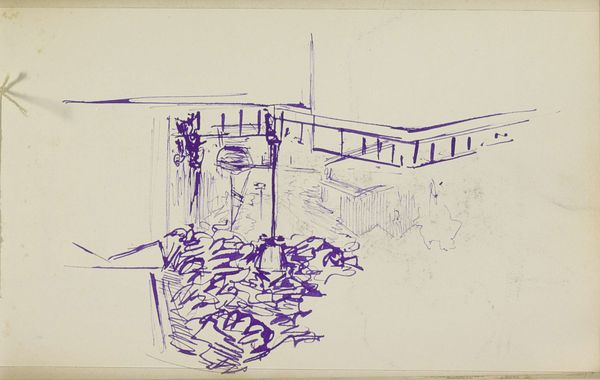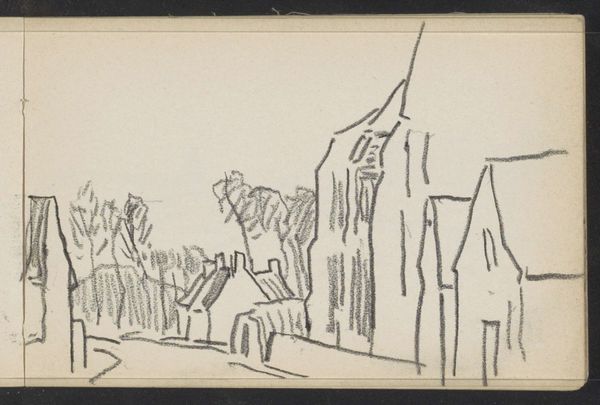
drawing, pencil, graphite
#
drawing
#
ink drawing
#
landscape
#
pencil
#
line
#
graphite
#
realism
Copyright: Rijks Museum: Open Domain
Editor: So, this drawing is called "Brug," meaning "Bridge," and it's by Alexander Shilling, likely created between 1913 and 1917. It's made with pencil, graphite, and ink. It's simple but evokes this feeling of something solid amidst chaos. What do you see in this piece? Curator: Well, immediately, I'm struck by how Shilling uses the bridge itself as a symbol. Bridges, historically, are so potent. They are about passage, connection, but also division and transition. Consider the "bridge of sighs," symbolizing the passage from life to death, or even the Rainbow Bridge connecting us with animals. Shilling invites you to reflect upon a cultural longing for connection. What do you make of his stark lines? Editor: I hadn't thought of it that way. The lines, though, feel incomplete somehow. Like the bridge isn’t quite finished, or maybe even broken? Curator: Precisely! The incompleteness is key. Look at the heavy use of graphite alongside delicate ink work. What emotions are stirred through their contrasts? Editor: It's like there’s hope mixed with a bit of melancholy. The realistic, almost mundane depiction paired with these less defined marks suggests something… fragile. Curator: Indeed. Is it just a functional bridge, or is it something more allegorical, representing a link to the past, or even a desired future? Perhaps Shilling wants to subtly capture both a personal state of disconnect and a societal call to togetherness, a symbolic tension? What does Shilling wish to say about our relation to each other and our environment? Editor: I get it. So, it’s not just a bridge, it is about the *idea* of a bridge. Thanks. That really gave me a new angle on how to read images. Curator: And you pointed me back to the pure visual impact. It is a conversation, and symbols gain force through being recognized again, reinterpreted and re-imagined over time.
Comments
No comments
Be the first to comment and join the conversation on the ultimate creative platform.
